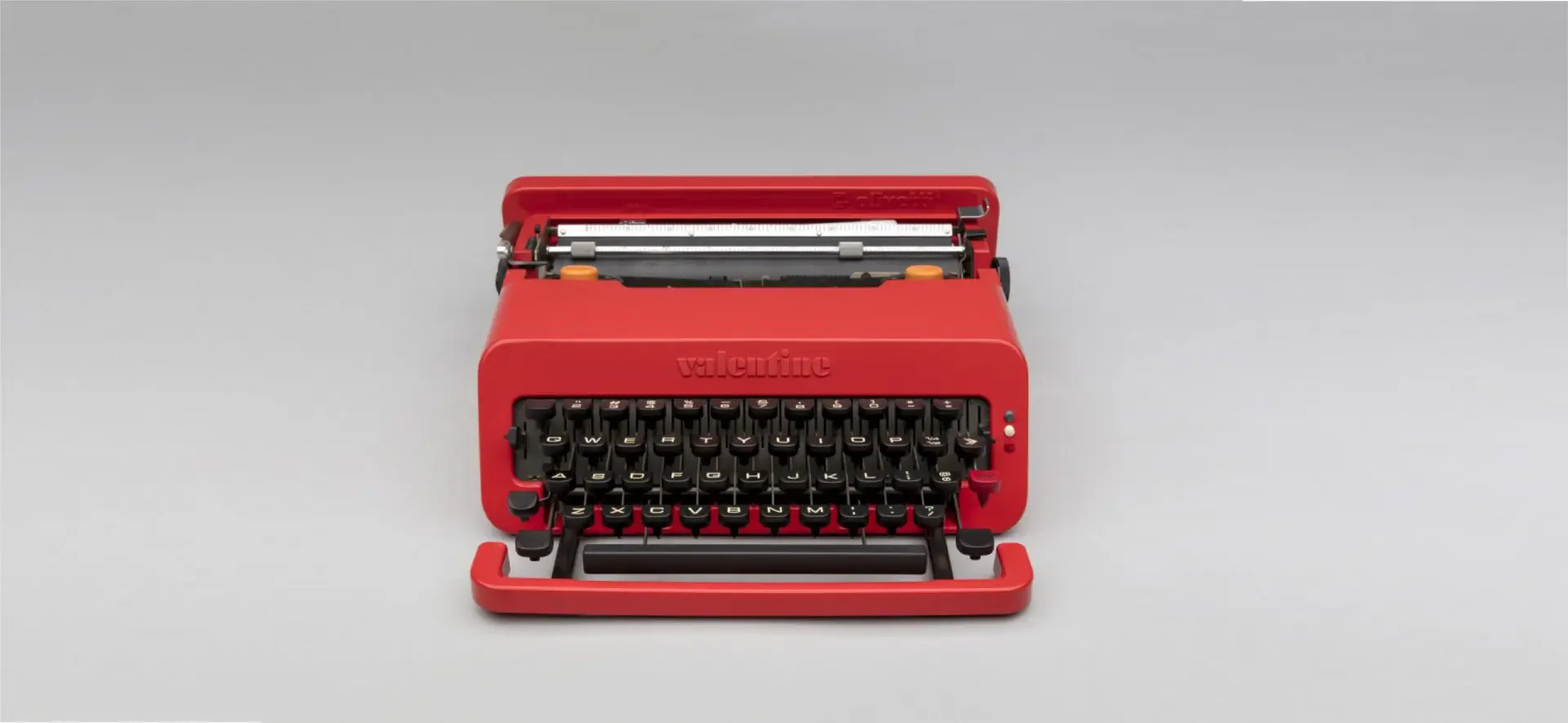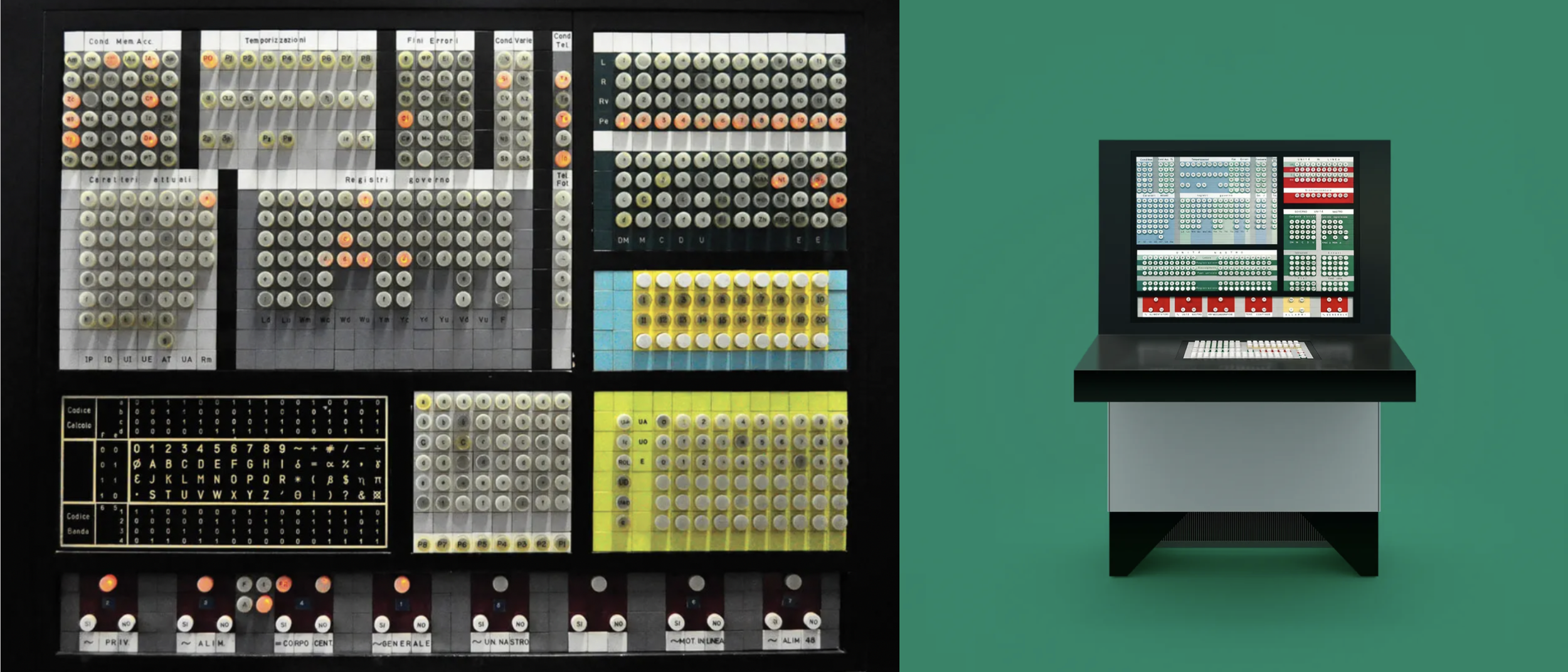Adriano OLIVETTI
1901 - 1960
Adriano OLIVETTI
To understand the origin of Modern Italian Design you must begin with Adriano Olivetti. Inheriting his father’s business in 1938, Adriano turned a small family-run typewriter factory into a global phenomenon.
An open anti-fascist, Olivetti fled to Switzerland during the final years of the Second World War. Whilst managing the company from afar, he aided the Italian-Resistance and British Intelligence service in the hopes of toppling Mussolini. During this exile he completed his book, L'ordine politico delle comunita` in which he outlined his personal philosophy of ‘Democratic Design’ - a vision for a society based on community and social responsibility.
Returning to Italy in 1945, he put his philosophy into action. Olivetti’s shop floor became a modern factory utopia. He removed hierarchical titles, introduced a five-day working week (cutting a day from the standard six-day week) and offered nine-month paid maternity leave (unheard of in Italy at the time). Moreover, instead of hiring only managers and technicians, he sought artists, writers, architects and designers - notably, Ettore Sottsass, Mario Bellini and Marcello Nizzoli. At its peak Olivetti employed over 73,000 people.
Olivetti’s headquarters - The La Serra complex - stands in tribute his vision. Designed by Ginio Cappai and Pietro Mainardis in 1967 it became a cultural centre and meeting place for Olivetti employees - consisting of an auditorium, a cinema, hotel and restaurant. The building itself was designed to resemble a typewriter, where the 'keys' are pod-like office rooms protruding from the building, and the 'carriage' is a cantilever overhang. Today, the building stands partially abandoned, but despite this, it is a UNESCO World Heritage Site as part of the "Industrial City of the 20th Century" in Ivrea, Italy.
Beyond workplaces and architecture, Olivetti was profoundly moved by the task of improving the quality of Italian life – taking a humanist approach to all aspects of his work. Typewriters, calculators, computers and ashtrays were not just practical items to Olivetti - they were to be artworks accessible to all.
A perfect example of this vision is Olivetti’s signature typewriter the Lettera 22 designed by Marcello Nizzoli. It was not only a technical masterpiece (portable, lightweight and compact) and but also a design masterpiece - with its clean lines, elegant typeface and enamel colour-ways. The far reaching cultural appeal for the Lettera 22 cannot be underestimated - a typewriter known to be favoured by likes of Fidel Castro, Sylvia Plath and Bob Dylan.
During the Cold War, Adriano along with Mario Tchou designed the ELEA - or Elaboratore Elettronico Aritmetico. At the time, it was the world’s most powerful computer. Manufactured in Italy, the ELEA was the main competitor of IBM. But while the U.S. was investing in information technology, the Italian government was not. As a result, the company decided to extend business to Russia and China (which proved to be a poor choice during the Cold War) eventually sold their mainframe business to General Electric in 1964.
Less than five years later, at only 58, Adriano suffered a deadly stroke while on a train to Switzerland. An autopsy did not follow, which has fueld conspiracy theories about his death, some of which claim was by the hand of the U.S. Secret Service.
KEY DESIGNS:
Lexikon 80: (1948): A flagship office typewriter that became an industry leader.
Lettera 22: (1950): Designed by Marcello Nizzoli, this portable typewriter won the Compasso d'Oro and is in MoMA's permanent collection.
Valentine: (1969): A colorful and portable typewriter designed by Ettore Sottsass and Perry A. King.Elea 9003: (1959): Olivetti's first transistorised electronic computer.
Divisumma: (1948): One of the first electric calculators
Programma 101 (1964) with the unveiling of the
Prodest PC 128: (1987): A significant personal computer from Olivetti.
Echos: (c. 1996): A popular line of laptop computers..





